Tag Archives: finance
Using GridSearchCV with Logistic Regression Models: Examples

GridSearchCV method is a one of the popular technique for optimizing logistic regression models, automating the search for the best hyperparameters like regularization strength and type. It enhances model performance by incorporating cross-validation, ensuring robustness and generalizability to new data. This method saves time and ensures objective model selection, making it an essential technique in various domains where logistic regression is applied. Its integration with the scikit-learn library (sklearn.model_selection.GridSearchCV) simplifies its use in existing data pipelines, making it a valuable asset for both novice and experienced machine learning practitioners. How is GridSearchCV used with Logistic Regression? GridSearchCV is a technique used in machine learning for hyperparameter tuning. It is a …
Handling Class Imbalance in Machine Learning: Python Example
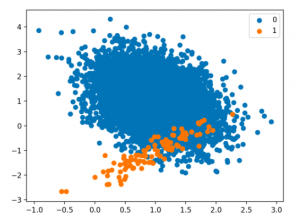
Techniques for Handling Class Imbalance Class imbalance may not always impact performance, and using imbalance-specific methods can sometimes worsen results. Xu-Ying Liu, Jianxin Wu, and Zhi-Hua Zhou, Exploratory Undersampling for Class-Imbalance Learning Above said, there are different techniques such as the following for handling class imbalance when training machine learning models with datasets having imbalanced classes. Python packages such as Imbalanced Learn can be used to apply techniques related to under-sampling majority classes, upsampling minority classes, and SMOTE. In this post, techniques related to using class weight will be used for tackling class imbalance. How to create a Sample Dataset having Class Imbalance? In this section, you will learn about how to create an …
Handling Class Imbalance using Sklearn Resample
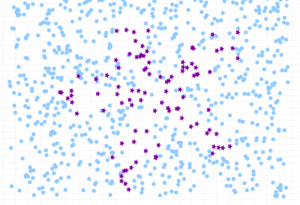
Last updated: 5th Dec, 2023 The class imbalance problem in machine learning occurs when the classes in a dataset are not represented equally, leading to a significant difference in the number of instances for different classes. This imbalance can cause a classification model to be biased towards the majority class, resulting in poor performance on the minority class. Thus, the class imbalance hinders data scientists by challenging the development of accurate and fair models, as the skewed distribution can lead to misleading training predictions / outcomes and reduced effectiveness in real-world applications where minority classes are critical. In this post, you will learn about how to tackle class imbalance issue …
Ordinary Least Squares Method: Concepts & Examples
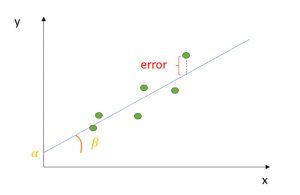
Last updated: 5th Dec, 2023 Regression analysis is a fundamental statistical technique used in many fields, from finance, econometrics to social sciences. It involves creating a regression model for modeling the relationship between a dependent variable and one or more independent variables. The Ordinary Least Squares (OLS) method helps estimate the parameters of this regression model. Ordinary least squares (OLS) is a technique used in linear regression model to find the best-fitting line for a set of data points by minimizing the residuals (the differences between the observed and predicted values). It does so by estimating the coefficients of the linear regression model by minimizing the sum of the squared …
Different Types of CNN Architectures Explained: Examples
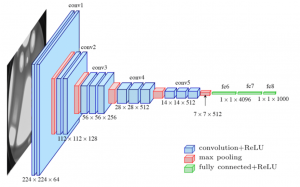
Last updated: 4th Dec, 2023. In the fast-paced world of computer vision and image processing, the problem of image classification consistently stands out: the ability to effectively recognize and classify images. As we continue to digitize and automate our world, the demand for systems that can understand and interpret visual data is growing at an unprecedented rate. The challenge is not just about recognizing images – it’s about doing so accurately and efficiently. Traditional machine learning methods often fall short, struggling to handle the complexity and high dimensionality of image data. This is where Convolutional Neural Networks (CNNs) comes to rescue. And, there are different types of CNN architectures based …
Logit vs Probit Models: Differences, Examples
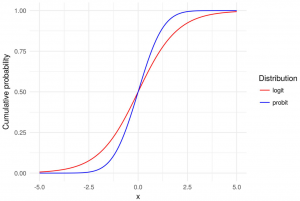
Logit and Probit models are both types of regression models commonly used in statistical analysis, particularly in the field of binary classification. This means that the outcome of interest can only take on two possible values / classes. In most cases, these models are used to predict whether or not something will happen in form of binary outcome. For example, a bank might want to know if a particular borrower might default on loan or otherwise. In this blog post, we will explain what logit and probit models are, and we will provide examples of how they can be used. As data scientists, it is important to understand the concepts …
Linear Regression Cost Function: Python Example
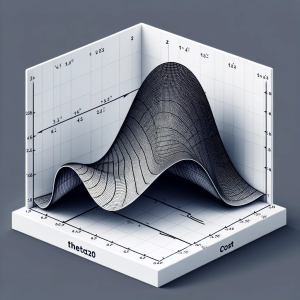
Linear regression is a foundational algorithm in machine learning and statistics, used for predicting numerical values based on input data. Understanding the cost function in linear regression is crucial for grasping how these models are trained and optimized. In this blog, we will understand different aspects of cost function used in linear regression including how it does help in building a regression model having high performance. What is a Cost Function in Linear Regression? In linear regression, the cost function quantifies the error between predicted values and actual data points. It is a measure of how far off a linear model’s predictions are from the actual values. The most commonly …
KNN vs Logistic Regression: Differences, Examples
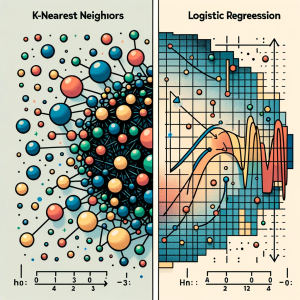
In this blog, we will learn about the differences between K-Nearest Neighbors (KNN) and Logistic Regression, two pivotal algorithms in machine learning, with the help of examples. The goal is to understand the intricacies of KNN’s instance-based learning and Logistic Regression‘s probability modeling for binary and multinomial outcomes, offering clarity on their core principles. We will also navigate through the practical applications of K-NN and logistic regression algorithms, showcasing real-world examples in various business domains like healthcare and finance. Accompanying this, we’ll provide concise Python code samples, guiding you through implementing these algorithms with datasets. This dual focus on theory and practicality aims to equip you with both the understanding …
Python – How to Create Scatter Plot with IRIS Dataset
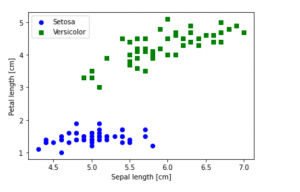
Last updated: 1st Dec, 2023 In this blog post, we will be learning how to create a Scatter Plot with the IRIS dataset using Python. The IRIS dataset is a collection of data that is used to demonstrate the properties of various statistical models. It contains information about 50 observations on four different variables: Petal Length, Petal Width, Sepal Length, and Sepal Width. As data scientists, it is important for us to be able to visualize the data that we are working with. Scatter plots are a great way to do this because they show the relationship between two variables. In this post, we learn how to plot IRIS dataset …
AIC in Logistic Regression: Formula, Example
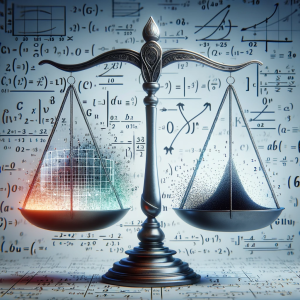
Have you as a data scientist ever been challenged by choosing the best logistic regression model for your data? As we all know, the difference between a good and the best model while training machine learning model can be subtle yet impactful. Whether it’s predicting the likelihood of an event occurring or classifying data into distinct categories, logistic regression provides a robust framework for analysts and researchers. However, the true power of logistic regression is harnessed not just by building models, but also by selecting the right model. This is where the Akaike Information Criterion (AIC) comes into play. In this blog, we’ll delve into different aspects of AIC, decode …
30+ Logistic Regression Interview Questions & Answers

Last updated: 29th Nov, 2023 This page lists down the practice tests / interview questions and answers for Logistic regression in machine learning. Those wanting to test their machine learning knowledge in relation with logistic regression would find these practice tests very useful. The goal for these practice tests is to help you check your knowledge in logistic regression machine learning models from time-to-time. More importantly, when you are preparing for interviews, these practice tests are intended to be handy enough. Those going for freshers / intern interviews in the area of machine learning would also find these practice tests / interview questions to be very helpful. These test primarily focus on …
Difference: Binary vs Multiclass vs Multilabel Classification

Last updated: 28th Nov, 2023 There are three main types of classification algorithms when dealing with machine learning classification problems: Binary, Multiclass, and Multilabel. In this blog post, we will discuss the differences between them and how they can be used to solve different problems. Binary classifiers can only classify data into two categories, while multiclass classifiers can classify data into more than two categories. Multilabel classifiers assign or tag the data to zero or more categories. Let’s take a closer look at each type! Binary classification & examples Binary classification is a type of supervised machine learning problem that requires classifying data into two mutually exclusive groups or categories. …
Classification Problems in Machine Learning: Examples
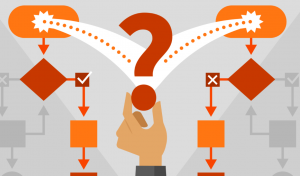
In this post, you will learn about some popular and most common real-life examples of machine learning (ML) classification problems. For beginner data scientists, these examples of classification problems will prove to be helpful to gain perspectives on real-world problems which can be solved using classification algorithms in machine learning. This post will be updated from time-to-time to include interesting examples which can be solved by training classification models. Before going ahead and looking into examples, let’s understand a little about what is an ML classification problem. You may as well skip this section if you are familiar with the definition of machine learning classification problems & solutions. You may …
Learning Curves Python Sklearn Example
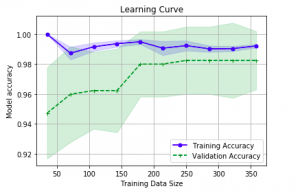
Last updated: 26th Nov, 2023 In this post, you will learn about how to use learning curves to assess the improvement in learning performance (accuracy, error rate, etc.) of a machine learning model while implementing using Python (Sklearn) packages. Knowing how to use learning curves will help you assess/diagnose whether the model is suffering from high bias (underfitting) or high variance (overfitting) and whether increasing training data samples could help solve the bias or variance problem. You may want to check some of the following posts in order to get a better understanding of bias-variance and underfitting-overfitting. Bias-variance concepts and interview questions Overfitting/Underfitting concepts and interview questions What are learning curves? …
Procurement Analytics Use Cases Examples
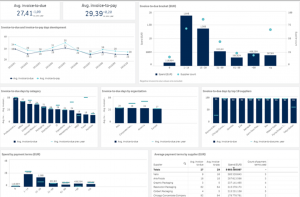
Last updated: 26th Nov, 2023 The procurement analytics applications is seeing tremendous growth in last few years. With so much data available, advancement in data analytics and related technology field, and the need for digital transformation across procurement organizations, it’s important to know how procurement analytics can help you make better business decisions. This blog will cover procurement analytics and key use cases examples from advanced analytics field such as machine learning, AI, generative AI that will be useful for business stakeholders such as category managers, sourcing managers, supplier relationship managers, business analysts/product managers, and data scientists to implement different use cases using machine learning. The use cases around data-driven decision …
XGBoost Classifier Explained with Python Example
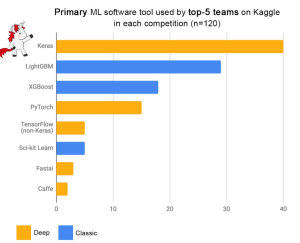
Among the myriad of machine learning algorithms and techniques available with data scientists, one stands out for its exceptional performance in classification problems: XGBoost, short for eXtreme Gradient Boosting. This algorithm has established itself as a force to reckon with in the data science community, as evidenced by its frequent use and high placements in Kaggle competitions, a platform where data scientists and machine learning practitioners worldwide compete to solve complex data problems. The following plot is taken from Francois Chollet tweet. Above demonstrates the prominence of XGBoost as one of the primary machine learning software tools used by the top-5 teams across 120 Kaggle competitions. The data points in …
I found it very helpful. However the differences are not too understandable for me